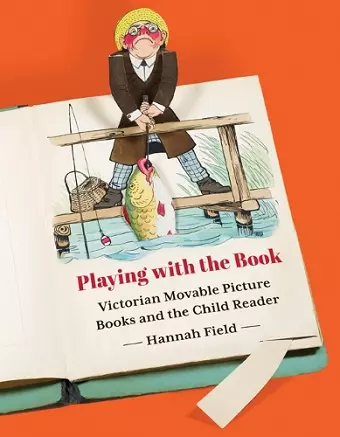Playing with the Book
Victorian Movable Picture Books and the Child Reader
Format:Paperback
Publisher:University of Minnesota Press
Published:2nd Jul '19
Should be back in stock very soon

A beautifully illustrated exploration of how Victorian novelty picture books reshape the ways children read and interact with texts
The Victorian era saw an explosion of novelty picture books with flaps to lift and tabs to pull, pages that could fold out, pop-up scenes, and even mechanical toys mounted on pages. Analyzing books for young children published between 1835 and 1914, Playing with the Book studies how these elaborately designed works raise questions not just about what books should look like but also about what reading is, particularly in relation to children’s literature and child readers.
Novelty books promised (or threatened) to make reading a physical as well as intellectual activity, requiring the child to pull a tab or lift a flap to continue the story. These books changed the relationship between pictures, words, and format in both productive and troubling ways. Hannah Field considers these aspects of children’s reading through case studies of different formats of novelty and movable books and intensive examination of editions that have survived from the nineteenth century. She discovers that children ripped, tore, and colored in their novelty books—despite these books’ explicit instructions against such behaviors.
Richly illustrated with images of these ingenious constructions, Playing with the Book argues that novelty books construct a process of reading that involves touch as well as sight, thus reconfiguring our understanding of the phenomenology of reading.
"With impressive archival work, considerable historical contextualization, and an admirable knack for close reading, Hannah Field deftly traces how children did, and didn’t, read texts that demanded engagement from the eye, the hand, and the mind. Playing with the Book offers a powerful theory of embodied reading that emerges from a respectful, sustained engagement with these remarkable books and the children who read them."—Anna Mae Duane, editor of The Children’s Table: Childhood Studies and the Humanities
"We may be underestimating the movable text’s place in the Victorian imagination. In this persuasive and lively study, Hannah Field reveals how nineteenth-century audiences played with and perceived toy theatres, panoramas, and mechanical books and describes modernity’s ferment in these powerfully nostalgic, ephemeral technologies. Movable novelties provided unique and engaging sensory experiences in the domestic space and in exhibition halls, and Field opens a critical window onto these interactive texts."—Nathalie op de Beeck, author of Suspended Animation: Children’s Picture Books and the Fairy Tale of Modernity
"Such books were made to be handled and used as much as read, and as such, they offer insight into the vexing question of children's agency as readers, especially when one looks at, as Field does, physical traces—ripping, scribbling, coloring—left behind by child readers."—CHOICE
"Field makes a significant contribution to what seems a niche topic, not least in her argument that it shouldn't be niche at all. At a moment when the focus of book history has shifted towards embodied reading and "doing things with books", such books—often bearing the traces of clumsy little hands—have a new kind of resonance."—Times Literary Supplement
"A well-written, thought-provoking, and timely book."—Barnboken
"Close attention to embodied engagement and agency is a strength of Field’s Playing with the Book."—Victorian Studies
"A valuable addition to graduate and undergraduate-level courses in children’s literature, book history, and Victorian studies... Playing with the Book teaches readers that we might pave the future of children’s literature by looking back into the past innovations and complications of movable books."—ImageText
"Field provides insightful readings and thoughtful considerations of novelty and movable books."—Children’s Literature Association Quarterly
- Winner of ChLA 2020
- Winner of BSA Schiller 2020
ISBN: 9781517901776
Dimensions: 229mm x 178mm x 25mm
Weight: unknown
248 pages